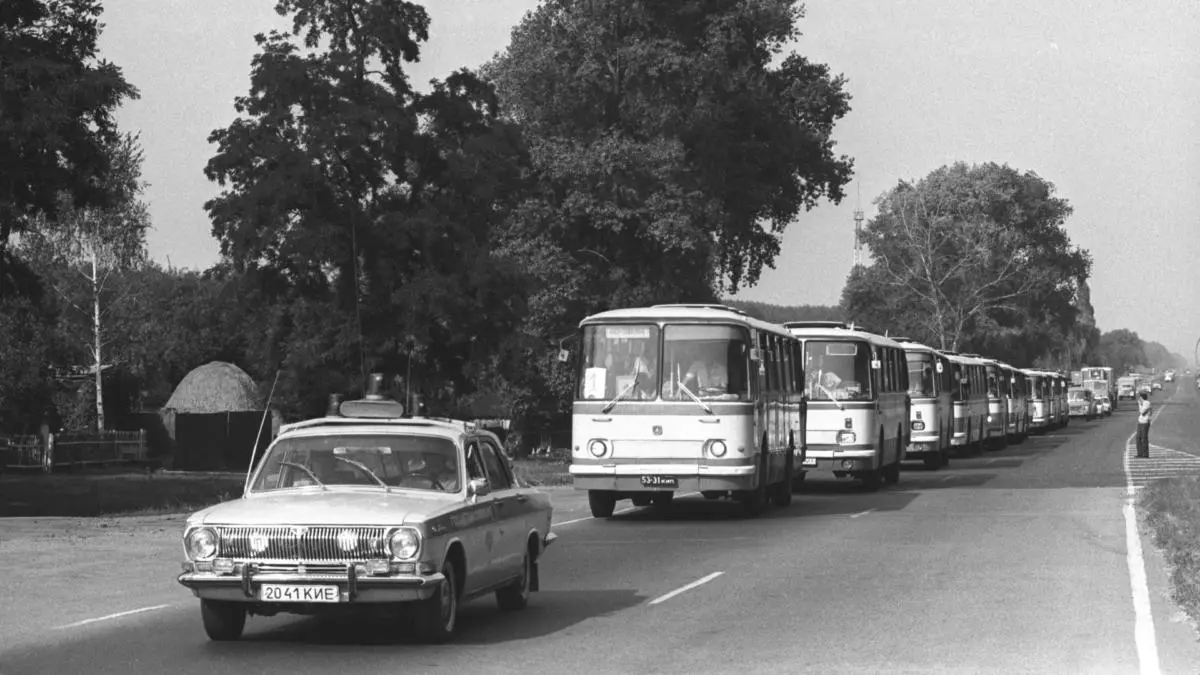
Courtesy of Pripyat City
“In the crucial first ten days, when the reactor core was burning and releasing a steady stream of highly radioactive material into the surrounding areas, the authorities repeatedly claimed that the situation was under control. . . In the week after the accident, while refusing to admit to the world that anything really serious had gone wrong, the Soviets poured thousands of men into the breach. . . The machines they brought broke down because of the radiation. The humans wouldn't break down until weeks or months later, at which point they'd die horribly.”
- Svetlana Alexievich, Voices from Chernobyl: The Oral History of a Nuclear Disaster

Courtesy of Pripyat City
The Soviets’ secrecy started to unravel as the disaster became too big to hide. The government tried to take down phone lines and jam radio signals, but citizens gained information about the accident through informal networks. The world began to learn of the accident because radioactive winds were sweeping across the globe.
Translation Exerpt:
Report on the results of the study of public opinion in connection with the accident at the Chernobyl' AEhS
Secret measures which have been conducted have established that the population of the City of Ivankov has been informed of the incident which has occurred, and that various sorts of fabrications, feelings of panic, signs of violations of law and order, or gatherings of city residents and migrants have not been recorded.
It has been established that during entry and exit from the city of Pripyat' vehicle transportation with state license plates [nomera] are not being stopped and documents are not being checked.
The people travelling in this vehicle transportation are not being subjected to decontamination when leaving the zone of contamination.
...The local population has been informed of the accident at the Chernobyl' AEhS within the bounds of the information presented in radio and television broadcasts.
... It declared that the water in the Dnepr River was completely contaminated.
A discussion was recorded on public transportation that a group of Japanese specialists had immediately left the city of Kiev in connection with the accident.
Work continues.
7th Directorate of the UkSSR MVD
[handwritten: illegible signature, 30 April 1986]
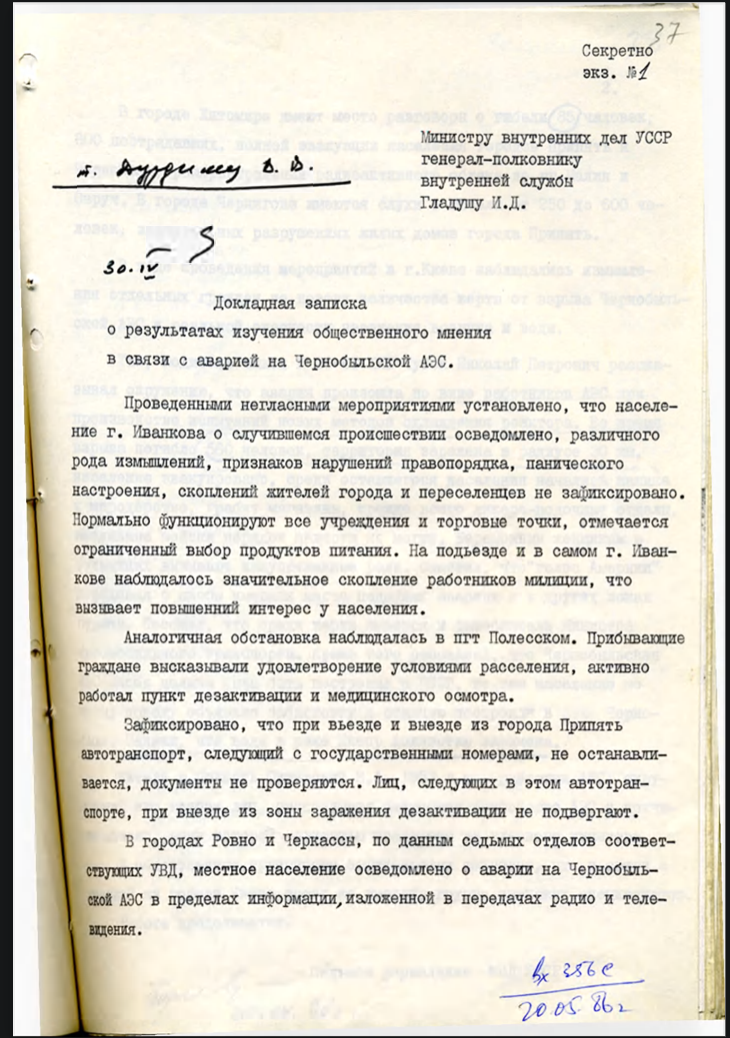
Declassified Soviet MIA document showing secret police were spying on citizen discussions about Chernobyl
Courtesy of the Wilson Center
First responders were unprepared and untrained, and thousands died as a result.
Courtesy of Igor Kostin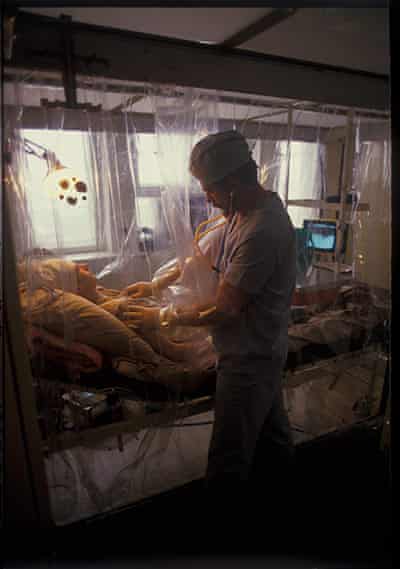
As Soviet leaders debated how to handle the accident, Swedish nuclear plant employees were recording unusually high radiation readings. They determined the source was Chernobyl. After mounting international pressure, the Soviets finally admitted there was an accident.
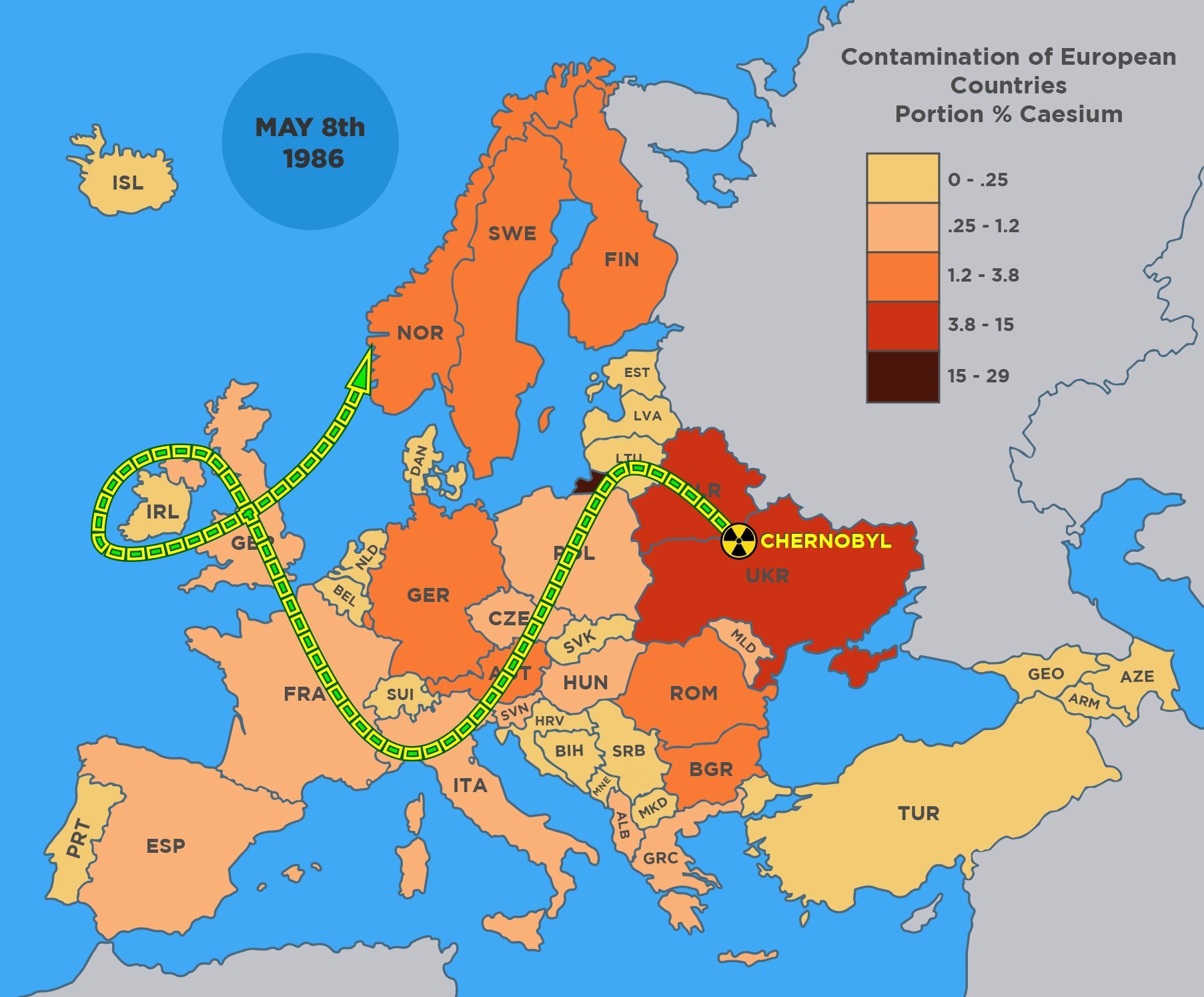
Courtesy of Chernobyl Museum
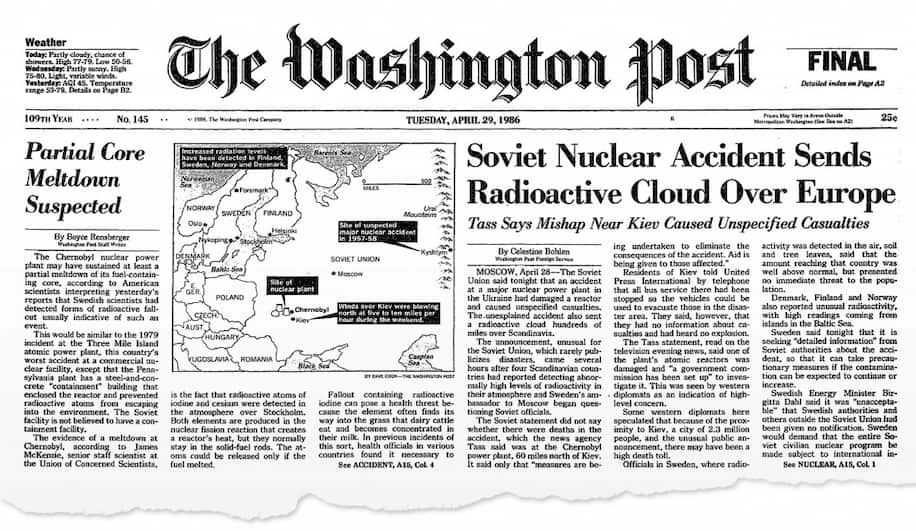
American Newspapers reported on the accident before the Soviet Union reported it in their own country.
Courtesy of the Washington Post
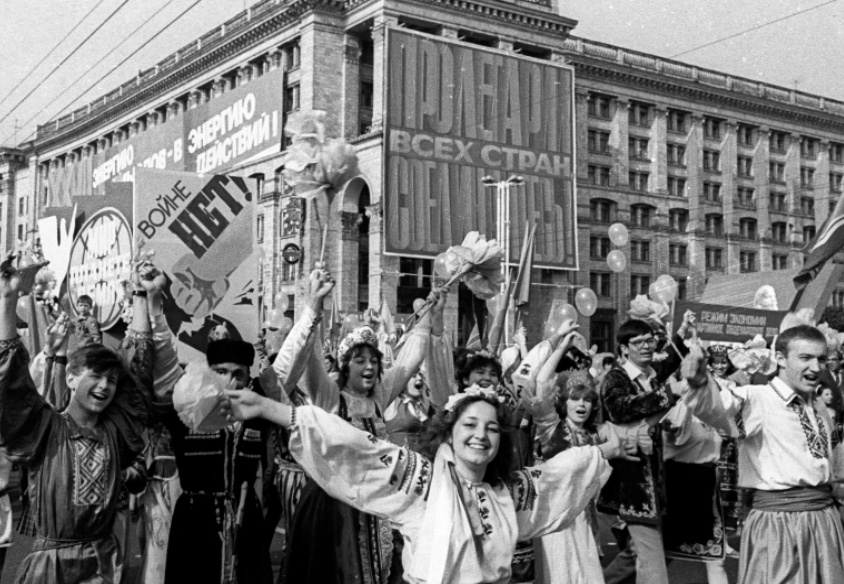
The May Day parade in Kiev was held while thousands walked the streets covered with radiation.
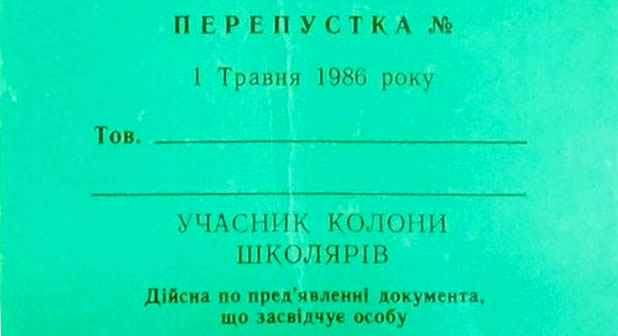
Invitation to children for the May Day parade.
“Every day, I would watch television and expect to hear when we could come back. When they said we could never come back, I burst into tears … We feel like outcasts...
- Valentyna Abramovych.”
Courtesy of Citizens of Pripryat
On April 27th, Pripyat officials received an urgent order to prepare for evacuation. Buses waited on the roads between Chernobyl and Pripyat for hours while absorbing high levels of radiation. Buses began to move at 1:30 a.m. on the morning of April 27. Residents believed this was a temporary evacuation. They were never allowed to come back.
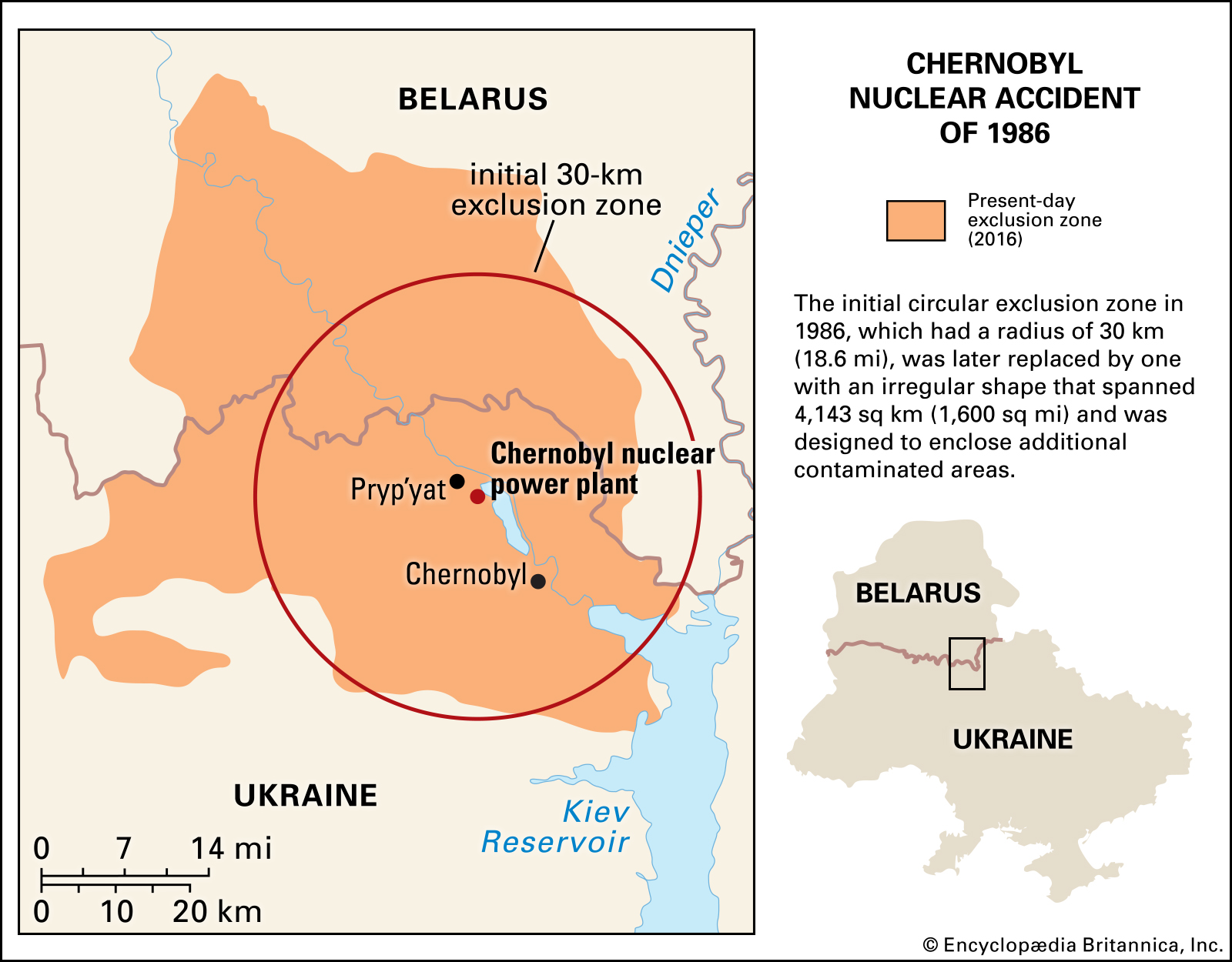
Courtesy of Encyclopedia Britannica
Hover over document for translation:
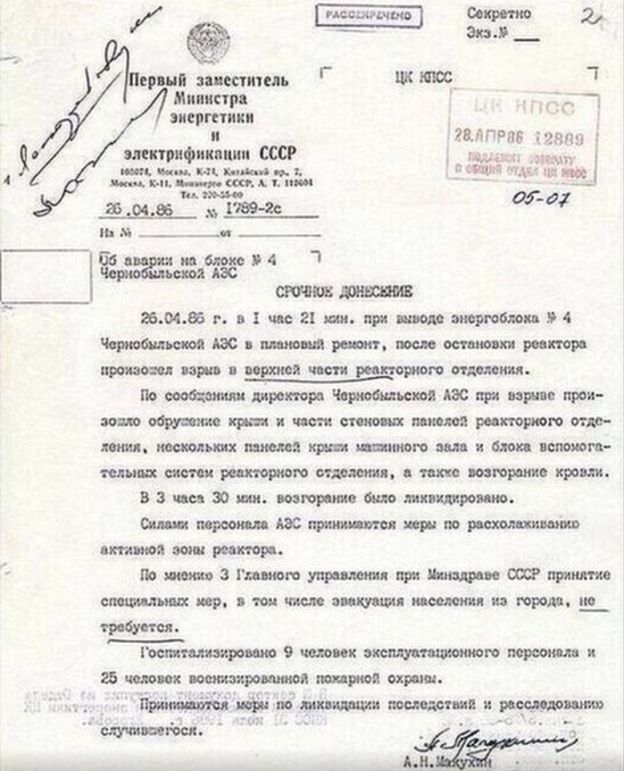
Translation: 27 April 1986, Nº 382s
Central Committee of the Communist Party of Ukraine
REPORT [illegible signature and initials dated 27 April 1986]
In fulfillment of an order of Cde. K. I. Masik, a Deputy Chairman of the UkSSR Council of Ministers, to carry out measures to prepare for the evacuation of the population from the city of Pripyat', Kiev Oblast', the Republic's Ministry of Automotive Transport received a signal at 2000 26 April 1986 to deploy automotive transportation of military-type vehicle columns and civil defense medical detachments to march composed of 1100 buses and one military-type automotive transport battalion (233 trucks).
Only the dropside trucks of two military automotive battalions (2240 and 2241) and three civil defense ambulance detachments with 72 sets of transport medical equipment (TSO) in storage in the mobilization reserve have been activated and prepared to transport the population to carry out the above
Beginning 2000 26 April 1986 a round-the-clock watch of the Minister, Deputy Ministers, and directorate chiefs, except operations duty officers, was established in the Ministry.
At 23:25, 26 April 1986 the Ministry received an instruction from the UkSSR Council of Ministers to move out the columns and march along a Kiev-Dymer-Ivankovo-Chernobyl' route.
Motor transportation consisting of separate columns of 60-70 units each has departed from enterprises; it includes:
[Ukrainian CP stamp: General Department,
2nd Sector Incoming Nº 1525/2S on 3 sheets,
28 April 1986 Subject to return]
Official Evacuation Order was received at 8pm on April 26th.
Courtesy of the Wilson Center
